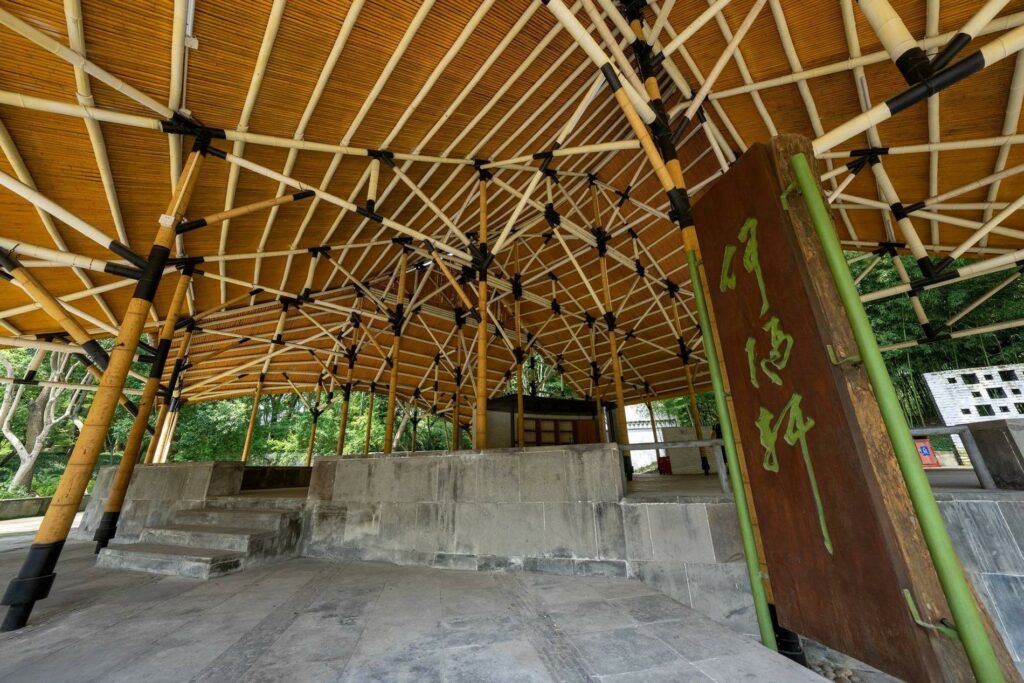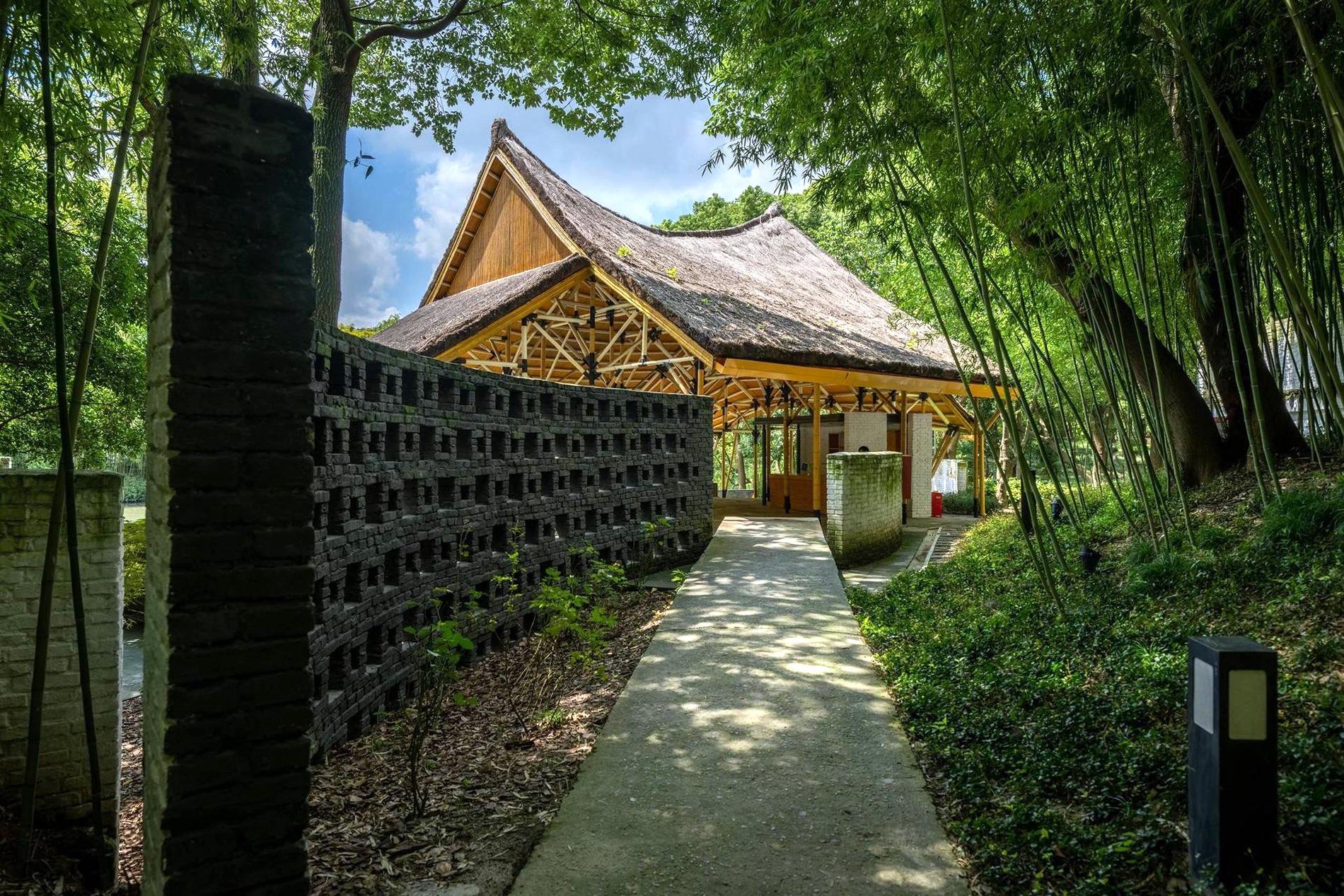This thatch-roofed tea house supported on bamboo pillars was built in 1986. The 510-square-meter (5490 sf) structure with its high arched roof was inspired by traditional rural residences in the Yangtze River Delta. After undergoing a major, two-year restoration project, it has now reopened to the public.
 It was designed by Feng Jizhong (1915-2009), who is recognized as one of the founding fathers of modern architecture, urban planning and landscape design in China, and was the first Chinese scholar to become a Fellow of the American Institute of Architects.
It was designed by Feng Jizhong (1915-2009), who is recognized as one of the founding fathers of modern architecture, urban planning and landscape design in China, and was the first Chinese scholar to become a Fellow of the American Institute of Architects.
 This tea house was designed to be near the ancient Fangta, or the Square Pagoda, which is a nine-level tower that was built as part of a Buddhist temple in the 11th century. The temple was later destroyed but the pagoda survived. A fine example of ancient Yangtze River Delta Buddhist pagodas, it has managed to preserve most of its original wood structure.
This tea house was designed to be near the ancient Fangta, or the Square Pagoda, which is a nine-level tower that was built as part of a Buddhist temple in the 11th century. The temple was later destroyed but the pagoda survived. A fine example of ancient Yangtze River Delta Buddhist pagodas, it has managed to preserve most of its original wood structure.
Besides the ancient pagoda, the park is home to a series of important cultural remains, including a brick screen wall built in 1370, which is one of the finest and best preserved tiled walls in China, and which features a monster with antlers like a deer, a tail like a lion, scales of a fish and hoofs of an ox.
 A natural material that has been used in Chinese architecture for thousands of years, bamboo is resilient and enduring if properly protected. Feng Jizhong painted all the nodes, where the bamboo connects, black, and had steel bases designed for each of the pillars, like shoes for feet, to protect the natural material from excessive humidity. Although the thatch has been changed every year, the main bamboo structure has survived over 30 years.
A natural material that has been used in Chinese architecture for thousands of years, bamboo is resilient and enduring if properly protected. Feng Jizhong painted all the nodes, where the bamboo connects, black, and had steel bases designed for each of the pillars, like shoes for feet, to protect the natural material from excessive humidity. Although the thatch has been changed every year, the main bamboo structure has survived over 30 years.
He envisaged the bamboo aging and eventually decaying and had his disciple spend six months making an accurate model, so that the pavilion could be rebuilt when necessary.
You can read the original article at www.chinadailyhk.com


Judging by the initial facade, you’d never have guessed that this teahouse was 510 sq m, it looks much smaller when viewed from the first photo. The facility really makes wonderful use of bamboo, which is essentially nature’s steel (a material so strong, it is even occasionally used for building SKYSCRAPERS out of),_and the sweeping roofline is unmistakably Oriental! I wonder whether this lovely teahouse managed to escape the Cultural Revolution of 1966 to 1970, or was a casualty of it.